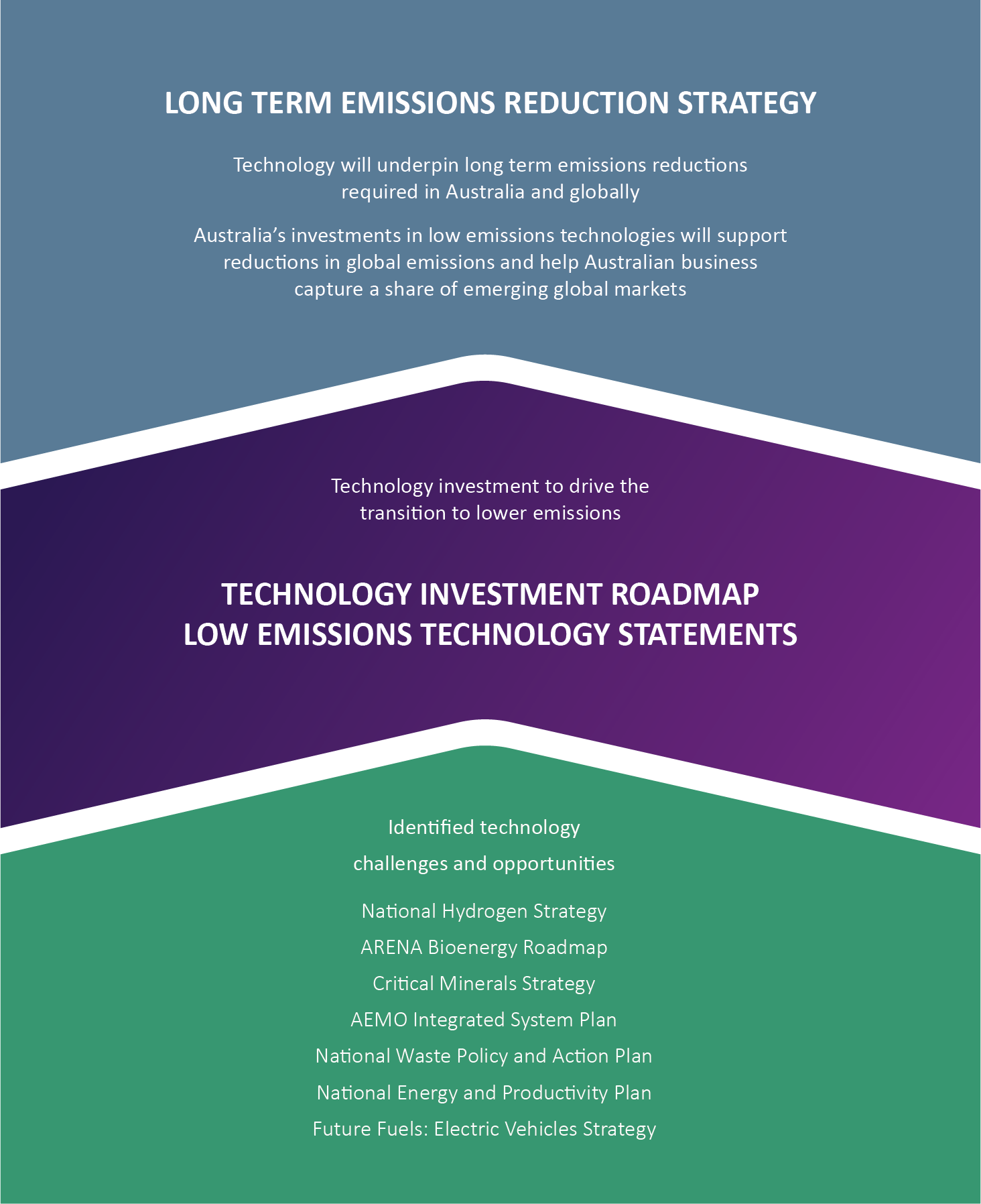The Government is pushing ahead with its commitment to invest in low emissions technologies that strengthen our economy, support jobs and businesses, and help reduce global emissions.
The Technology Investment Roadmap and Australia's first Low Emissions Technology Statement outline the government's plans to:
- preserve and create jobs, capture new opportunities and revitailise Australia's regional economies
- lower household living expenses with abundant, clean and low-cost energy
- build competitiveness by leveraging our comparative advantages
- attract and retain the best minds in priority low emissions technology research
The Statement will do so by supporting the development of new and emerging technologies in 5 priority areas:
- clean hydrogen
- energy storage
- low carbon materials
- carbon capture and storage (CSS)
- soil carbon measurement
The Statement sets economic stretch goals for each technology:
- clean hydrogen - under $2 per kilogram
- energy storage - electricity from storage for firming under 100/MWh (which would enable firmed wind and solar at pricing at or below today's average wholesale electricity price)
- low carbon materials - low emissions steel production under $900 per tonne and low emissions aluminium under $2,700 per tonne
- CCS - CO2 compression, hub transport, and storage under $20 per tonne of CO2
- soil carbon - measurement under $3 per hectare per year
The Government expects to invest over $18 billion in low emissions technologies over the decade to 2030. These investments will support over 130,000 jobs by 2030, with more than half of these in regional communities.
Targeted investment in low emissions technologies will tackle technology challenges and create opportunities. This includes helping Australian business capture a share of emerging global markets.
Driving the transition to lower emissions
The Statement also articulates a comprehensive investment framework to guide key government agencies (the Clean Energy Finance Corporation, Australian Renewable Energy Agency and Clean Energy Regulator) towards the Statement's priorities. It will also guide State deals that will deliver initiatives to increase the supply of electricity and gas, improve grid security and reduce emissions.
Technology deployment will complement other strategies lowering long term emissions including the National Hydrogen Strategy and Future Fuels Strategy.

Consultation and input
The Statement draws on the insights our department gathered from stakeholders in response to the Technology Investment Roadmap Discussion Paper, released in May this year. We received around 500 written submissions and conducted 7 targeted virtual workshops with more than 150 businesses and community organisations.
The Government will update priorities each year with advice from an expert group of science, business, technology and government leaders.






